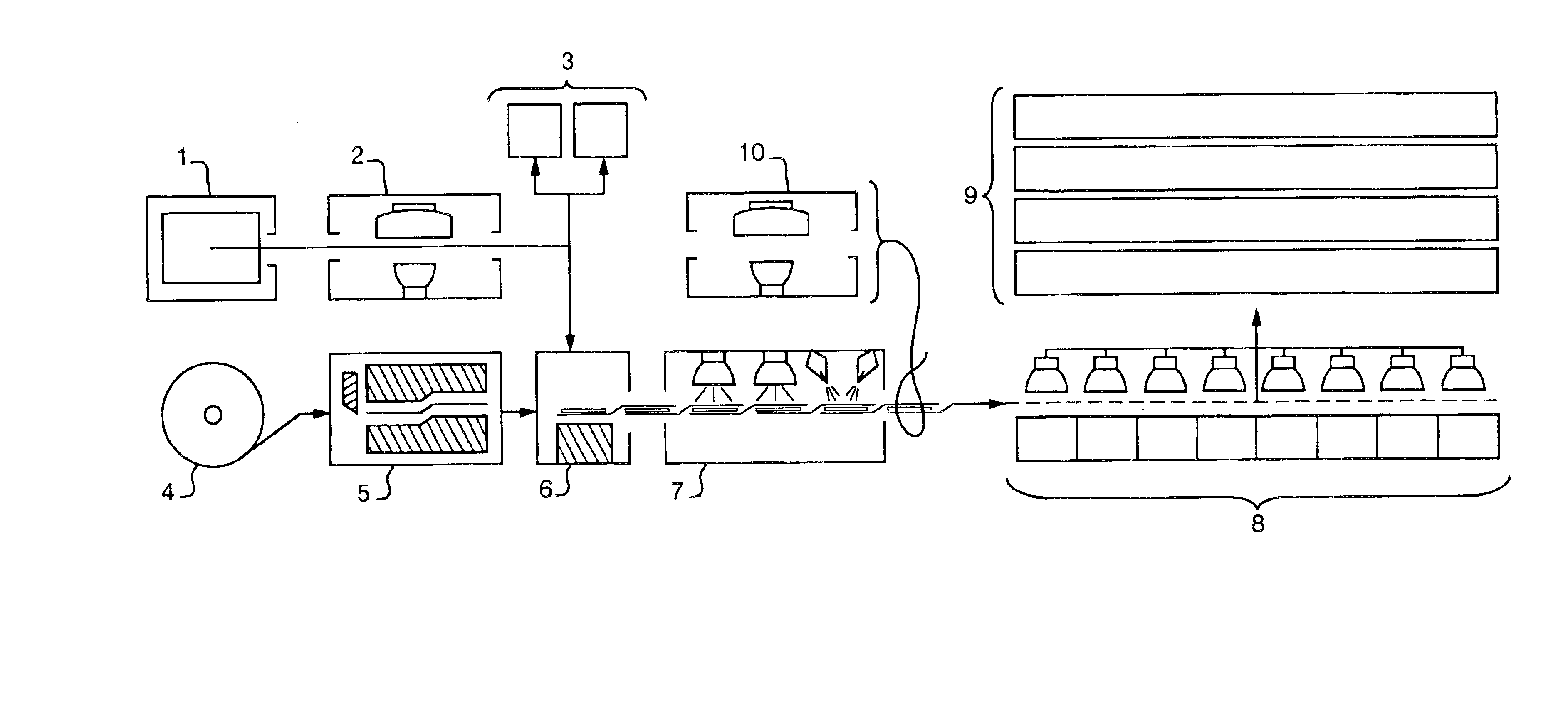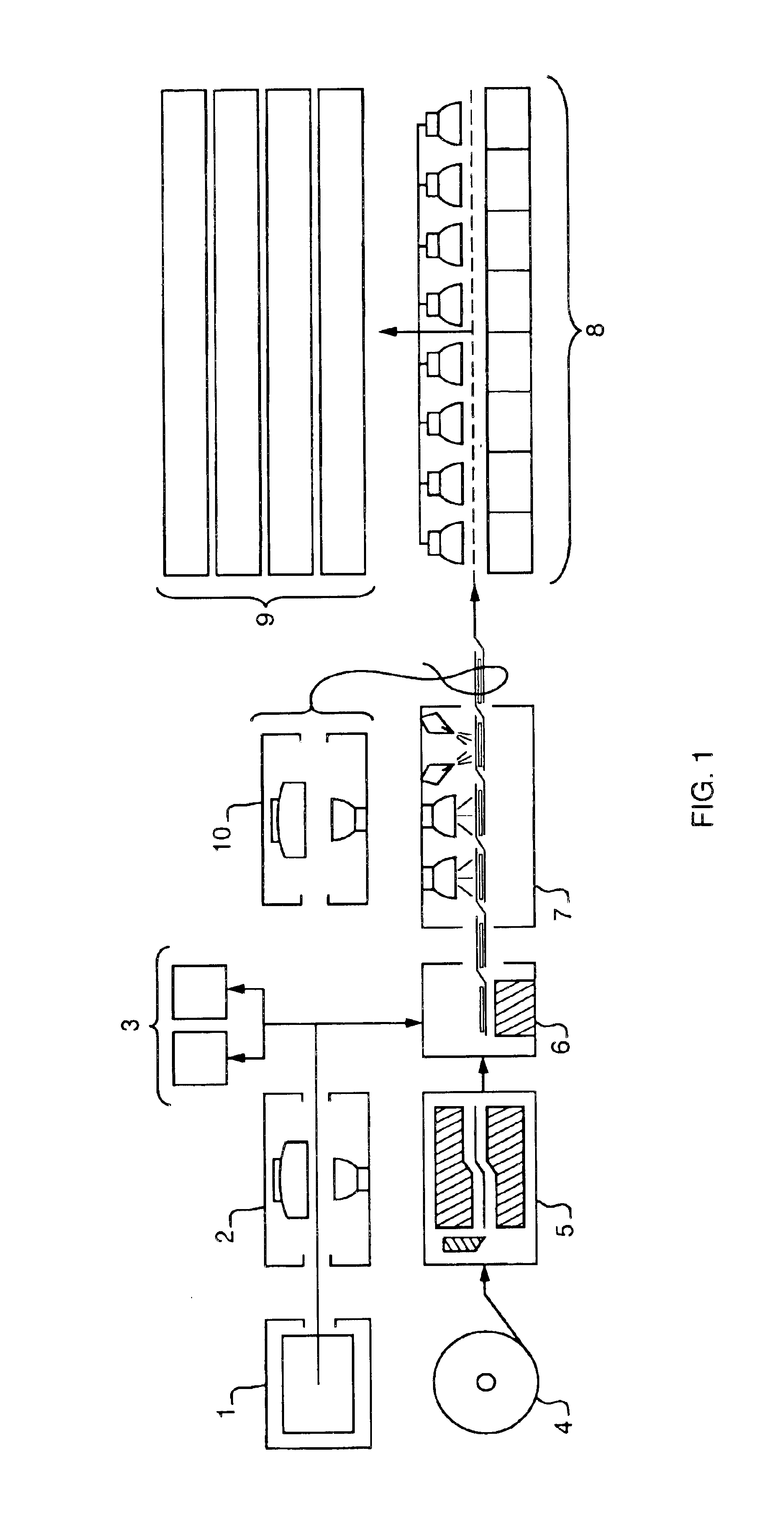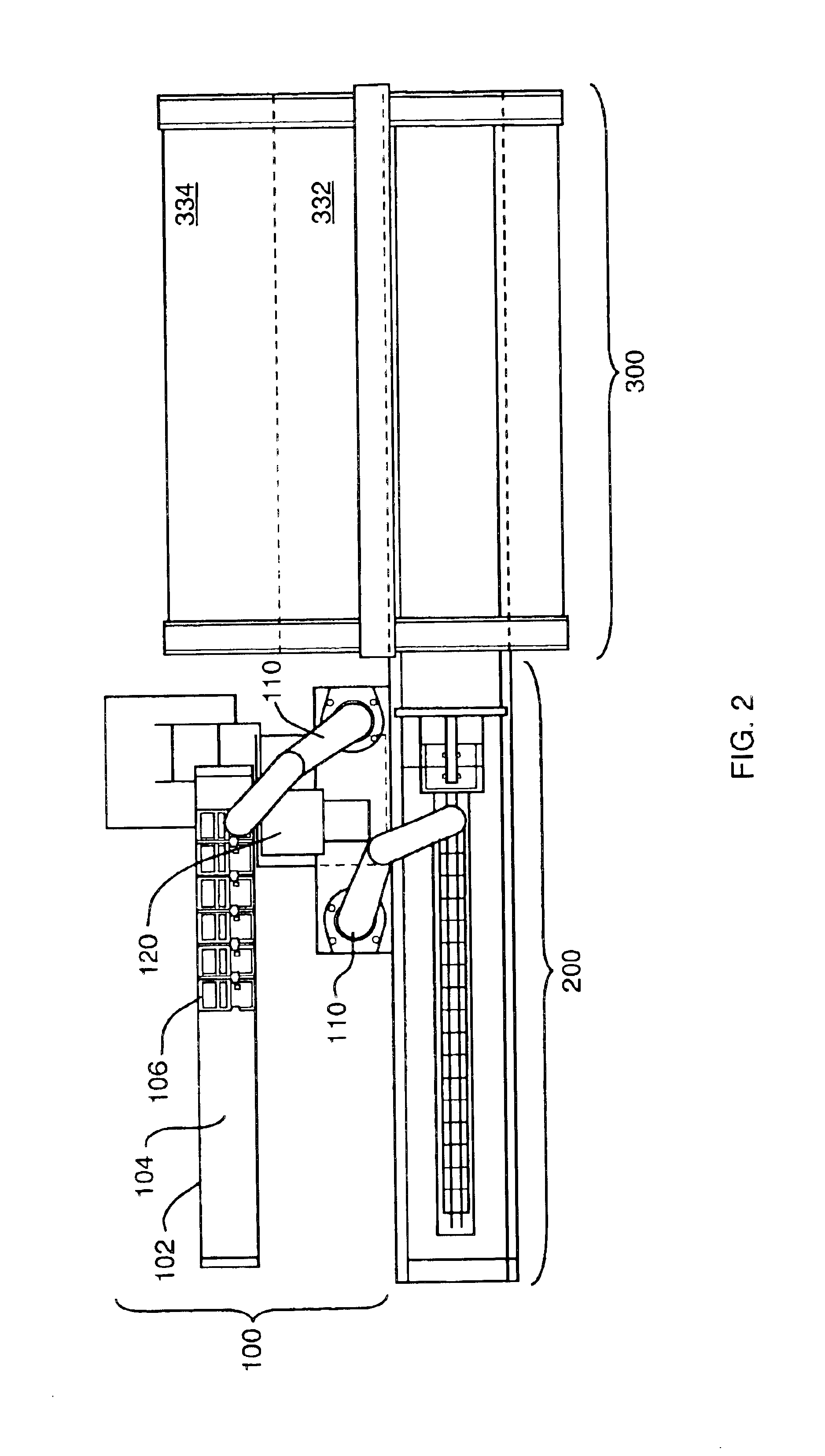Solar cell stringing machine
a solar cell and stringing machine technology, applied in the field of solar cell stringing machines, can solve the problems of insufficient voltage produced across the contacts of a single cell photovoltaic cell, affecting the overall production cost of the solar panel, and the assembly process is a significant factor in the overall production cos
- Summary
- Abstract
- Description
- Claims
- Application Information
AI Technical Summary
Benefits of technology
Problems solved by technology
Method used
Image
Examples
Embodiment Construction
The invention is susceptible of many embodiments. A preferred embodiment is illustrated in the attached figures and explained below. Minor variations of the preferred embodiment are evident in the figures, but are substantially the same, with common or similar components and the same reference numbers, except as noted.
Referring to FIG. 1, the basic operation of the stringing machine is readily explained. Solar cells are supplied to the machine at (1), then advanced for pre-assembly inspection at (2), with rejects being disposed of at (3) for either of two reasons. Reels of tabbing material are supplied to the machine at (4), then cut and crimped into tab pairs at (5). Cells and pairs of tabs are transported in sequence to tab and cell assembly area (6) for interlocking alignment on a string platen, then the string is indexed by the platen cell by cell through the three zones of soldering station (7) for pre-heating, soldering, and cooling. The finished string is advanced out of proc...
PUM
| Property | Measurement | Unit |
|---|---|---|
| voltage | aaaaa | aaaaa |
| length | aaaaa | aaaaa |
| area | aaaaa | aaaaa |
Abstract
Description
Claims
Application Information
 Login to View More
Login to View More - R&D
- Intellectual Property
- Life Sciences
- Materials
- Tech Scout
- Unparalleled Data Quality
- Higher Quality Content
- 60% Fewer Hallucinations
Browse by: Latest US Patents, China's latest patents, Technical Efficacy Thesaurus, Application Domain, Technology Topic, Popular Technical Reports.
© 2025 PatSnap. All rights reserved.Legal|Privacy policy|Modern Slavery Act Transparency Statement|Sitemap|About US| Contact US: help@patsnap.com



